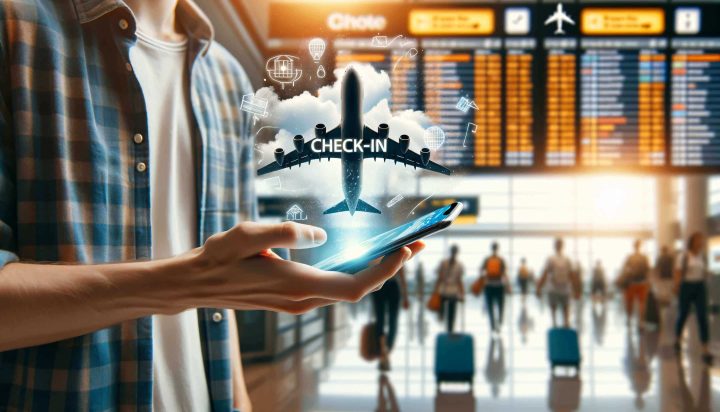With the constant increase in the number of air passengers, managing airport traffic has become a major challenge. To address this, airports are turning to Internet of Things (IoT) technologies. These technologies are transforming airport infrastructures into “smart airports,” offering better passenger flow management, enhancing security, and optimizing operations.
The role of IoT in airports
The Internet of Things (IoT) refers to the interconnection of smart devices capable of collecting, exchanging, and analyzing data in real-time. In airports, IoT enables the connection of various equipment and systems, such as sensors, cameras, information kiosks, and baggage management systems.
Passenger monitoring and management
IoT sensors play a crucial role in monitoring passenger movements. They can detect crowded areas and transmit this information to airport managers. This data allows for immediate action to direct passenger flows and reduce wait times.
Advanced security systems
Airports use IoT devices to enhance security. Smart cameras with facial recognition capabilities can identify suspicious individuals in real-time. Additionally, metal and explosive detection sensors are connected to central systems for a quick response in case of a threat.
Baggage management
Baggage management is another area where IoT is making a significant impact. RFID tags on baggage allow for precise tracking throughout its journey. Passengers can be informed in real-time of the location of their luggage via mobile apps, reducing stress and the risk of loss.

Benefits for passengers
👍 Enhanced passenger experience
Thanks to IoT, passengers benefit from a smoother and more pleasant travel experience. Flight information, security checkpoint wait times, and directions within the airport are accessible in real-time via mobile apps. Passengers can also receive personalized notifications, such as boarding gate alerts or special offers in duty-free shops.
⏳ Reduced waiting times
Sensors and flow management systems significantly reduce waiting times. For example, queues at security checks and customs can be optimized in real-time by redirecting passengers to less crowded checkpoints.
🚨 Increased security
Security is enhanced through IoT technologies. Passengers can feel safer knowing that advanced systems are constantly monitoring the airport environment and are ready to respond in the event of a threat.
Optimizing airport operations
Predictive maintenance
Airport equipment, such as conveyor belts, elevators, and air conditioning systems, are equipped with IoT sensors that monitor their condition in real-time. These sensors detect anomalies before they cause breakdowns, reducing downtime and maintenance costs.
Energy management
Smart airports use IoT systems to optimize energy consumption. Motion sensors and smart thermostats automatically adjust lighting and temperature based on space occupancy, leading to significant energy savings.
IoT is revolutionizing passenger flow management in airports. By improving monitoring, security, and operations management, IoT is transforming airports into smart infrastructures, offering an enhanced travel experience for passengers and increased efficiency for managers. As IoT technologies continue to develop, airports will become even smarter, safer, and more efficient.
For more information, click here
